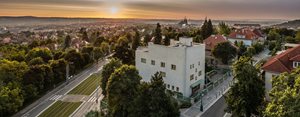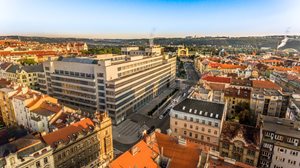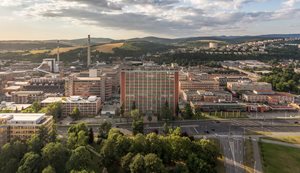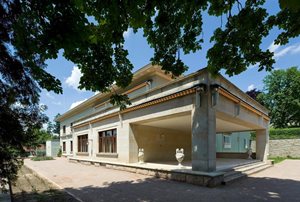Functionalism was a school that became popular in the 1920s and 1930s. The leading architectural style was also dominant in Czechoslovakia and, in the interwar period, Czechoslovak architecture was one of the best in Europe thanks to functionalism. You can visit true gems of world architecture designed by such architects as Adolf Loos or Ludwig Miese van der Rohe.
1. Villa Tugendhat
Address: Černopolní 45, BrnoVilla Tugendhat is undoubtedly the pearl of functionalism and you can find it the Moravian capital, Brno. The Villa is a unique functionalistic work by German architect Ludwig Miese van der Rohe and it is the only modern architecture monument in the Czech Republic registered on the UNESCO World Cultural Heritage List. At the same time, it is a building that helped define the new parameters of modern living and is one of the basic works of world modern architecture – functionalism. In 2010–2012, the villa with the adjacent garden was restored to the original form of its completion in 1930. Reservations are highly recommended due to the large number of visitors.

2. Villa Müller
Address: Nad Hradním vodojemem 14/642, Praha 6 – StřešoviceThe luxurious functionalistic Villa Müller can be found in one of the most famous and oldest garden and villa quarters in Prague: Ořechovka. The Villa belonged to Milada and František Müller and it was designed by genial architect Adolf Loos, who was working in Bohemia at that time. It was the commission of the Villa that allowed Loos to bring his original concept of space to the highest level. The furnishings of the villa interior that Loos selected and often also designed represent a surprising harmony of modern functionalism and the classicist English style.

3. Trade Fair Palace
Address: Dukelských hrdinů 530/47, Praha 7The Trade Fair Palace is another important functionalistic building in Prague. It was built between 1925 and 1928 and at that time it was the largest building of its type in the world. In 1976, the National Gallery in Prague acquired the building, which the Gallery still owns and uses for its permanent exposition on the Art of the 20th and 21st Centuries.

4. Baťa’s Skyscraper
Address: třída Tomáše Bati 21, ZlínBaťa’s Skyscraper was built by Jan Antonín Baťa (the stepbrother of famous shoemaker Tomáš Baťa) in Zlín based on a project by architect Vladimír Karfík in 1936 to 1938, and because the number of the building is 21, it is called the twenty-one. The skyscraper has 17 stories and its height of 77.5 metres made it the second largest building in Europe at that time. The building is a small technological miracle – there is a tubular post system there, floor sockets for electricity and telephones, and a lift that was used as the office of the company manager with the dimensions of 6 x 6 metres. Therefore, it is no surprise that the skyscraper was listed as one of the eight most important monuments of 20th century Czech architecture. Today, it is occupied by the Regional Office of the Zlín Region. And one more interesting fact: men’s toilets were designed on each floor but there are women’s toilets only on the second and the ninth floors.

5. Villa Stiassni
Address: Hroznová 82/14, Brno-středThe L-shaped functionalistic two-storey villa in Brno was designed by Ernst Wiesner. It was completed in 1929. The construction was ordered by businessman Alfred Stiassni and his wife Hermine, which is where the villa got its name from. In 1952, the villa and its garden were nationalized by the state for representative purposes and that is why it is sometimes called the “government villa”. Several prominent people stayed in the villa, Fidel Castro included. The villa has been managed by the National Monument Institute since 2009 and it has been opened to the public for the last three years.











-(1).jpg?width=1920&height=1204&ext=.jpg)
